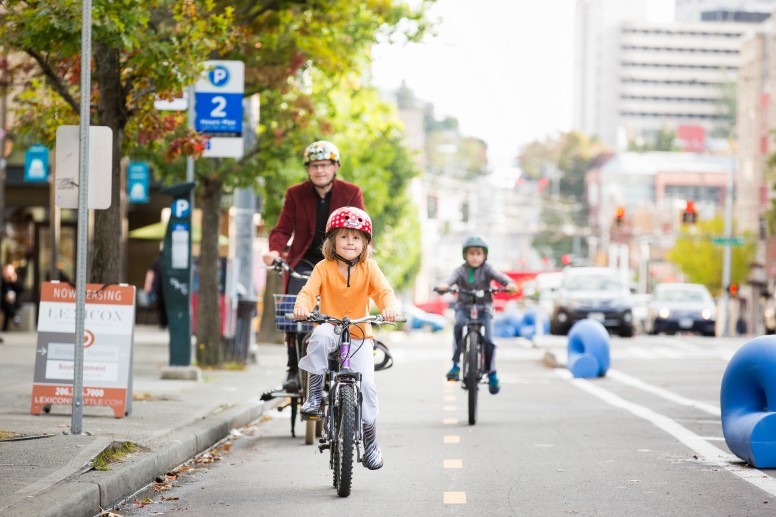Today, May 4, is the fifth annual National Bike to School Day. More than 2,000 events are planned nationwide, with 77 in the tri-state area alone, from safety workshops to group rides.
Children who walk or bike to school are at a lower risk for obesity and perform better in school, but decades-long trends have shown a steep decline in the number of kids who do so. Meanwhile, the share of students driven to school has tripled. Some schools have even banned students from biking or walking.
In 1969, 48 percent of kids between ages 5 to 14 walked or biked to school. Forty years later, that rate had plummeted to 13 percent. In recent years, however, walking to school has been making a bit of a comeback, thanks in part to active transportation initiatives like Safe Routes to School (SRTS). Between 2007 and 2012, the shares of kids who walked to and from school rose 3.3 percent and 3.9 percent, respectively. Biking to school, on the other hand, has actually decreased: in that same time period, the percentage of students who biked to and from school fell 0.4 percent, hitting just 2.2 percent.
In a survey by the National Center for Safe Routes to School, distance (62 percent), traffic speed (55 percent), traffic volume (55 percent) and crossing safety (47 percent) were the four most-cited barriers by parents who did not allow their child to walk or bike to school. Only 10 percent of such respondents, however, said the convenience of driving influenced their decision.
These dangers of walking and biking to school–real or perceived–are major impediments to getting more families to opt for active transportation. When more people bike and walk on a street or in a neighborhood, the risk of injury or death via vehicle collisions in that area drops. But perceived dangers, which influence a parent’s decision on whether or not to allow their child to bike or walk to school, are both legitimate concerns and self-fulfilling prophecies. Streets that lack adequate sidewalk space or safe crossings, or neighborhoods that facilitate high-speed automobile traffic aren’t suitable for anyone–least of all young children–to bike or walk. And when parents observe these dangerous road conditions, they may then choose to drive their child to school–adding yet another car to those streets.
What’s more, many students live farther from their schools today than they did 40 or 50 years ago, making biking or walking to school less convenient than driving. In 1969, 41 percent of students ages 5 to 14 lived within one mile of their school, but by 2009, that share dropped to roughly 31 percent. Now, nearly half of students in kindergarten through eighth grade live more than two miles away from their school. The key to encouraging active transportation among families who live farther from their child’s school is not just installing one-off safety improvements to certain streets, but building a comprehensive network of safe streets.
Schools that have SRTS education and encouragement initiatives saw a 25 percent increase in walking and biking to school over a five-year period. Active travel to school increased 37 percent at schools in four different states after SRTS projects were completed. If school administrators are concerned about their students biking or walking to school, they’d be remiss to ignore the long-term threats of poorly designed streets and physical inactivity–the consequences of which are easy to forget when schools and neighborhoods prioritize the movement of automobiles instead of people.


[…] Many students in the Collingswood Public School District weren’t able to participate in National Bike to School Day: the district prohibits students in the fifth grade and younger from riding their bikes to […]
[…] of American school kids under 15 biked or walked to school, writes Emma Kilkelly at Network blog Mobilizing the Region. By 2009, the rate had shrunk to just 13 […]
[…] buses. With back-to-school season already in full swing, it’s a good time to remember that just 13 percent of kids between ages 5 and 14 walk or bike to school. Many families have cited traffic-related concerns as barriers influencing their decision to […]